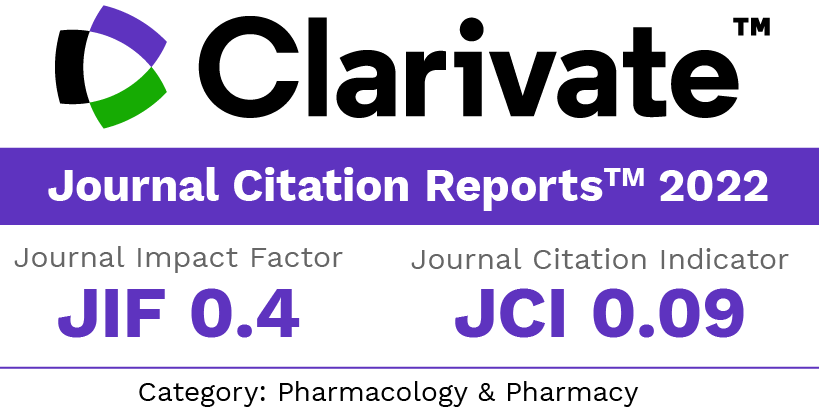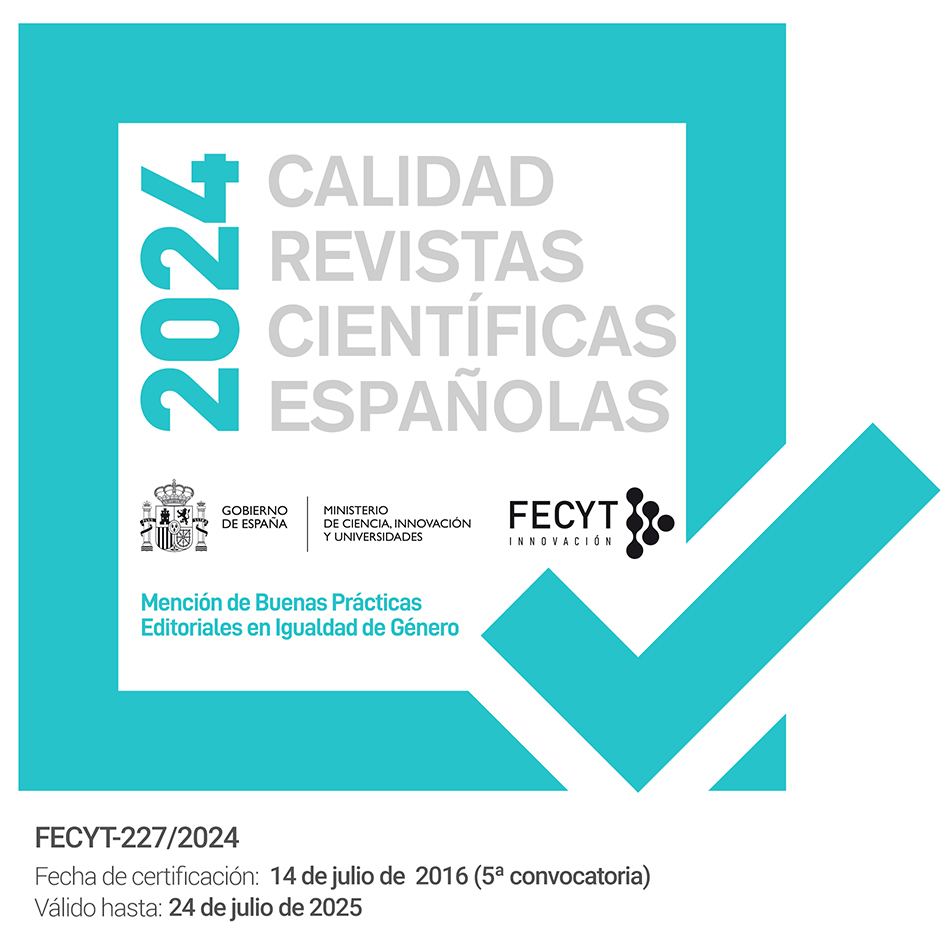Quemaduras solares: fotoprotección y tratamiento
Palabras clave:
Fotoprotección, Fotoprotectores solares, Fotosensibilidad, Prevención, Quemaduras solares, Radiación solar, Radiación ultravioleta, TratamientoResumen
La radiación ultravioleta es la principal responsable de los efectos nocivos de la radiación solar sobre el organismo.Las quemaduras solares, reacción aguda y visible de la exposición de la piel a dicha radiación, pueden cursar conlesiones cutáneas graves, destrucción celular y afectación de tejidos anexos, pudiéndose acompañar de edemas ypérdida de líquidos. La revisión tiene por objeto describir y valorar los efectos de la reactividad cutánea frente ala exposición a la radiación ultravioleta y clarifi car las distintas estrategias de prevención y/ o tratamiento de lasquemaduras solares. Parece recomendable incidir en la necesidad de adoptar hábitos saludables frente a la exposicióna la radiación ultravioleta, especialmente en los primeros 18 años de vida, así como realizar campañas educativascon el objetivo de prevenir la aparición y/ o agravamiento de enfermedades derivadas de dicha exposición.Descargas
Citas
Martin Memorial Health System: http://www.mmhs.com/clinical/peds/spanish/burns/sunburn.htm
Wacogne ID. Burn baby burn. Archives of Disease in Childhood 2002; 86 (6):438
Holman CDJ, Armstrong BK, Evans PR et al. Relationship of solar keratoses and history of skin cancer to objective measures of actinic skin damage. Br J Dermatol 1984;110:129-38
Brooke RC, Newbold SA, Telfer NR et al. Discordance between facial wrinkling and the presence of basal cell carcinoma. Arch Dermatol 2001;137:751-4
Foote JA, Harris RB, Giuliano AR, et al. Predictors for cutaneous basal- and squamous-cell carcinoma among actinically damaged adults. Int J Cancer 2001;95:7-11
Fitzpatrick TB. The validity and practicability of sun-reactive skin types I through VI. Arch Dermatol 1988;124:869-71
Adam JE. Living a “shady life”: sun-protective behaviour for Canadians. Can Med Assoc J 1999;160(10):1471-1474
Kelly DA, Seed PT, Young AR, Walker SL. A commercial Sunscreen´s Protection Against Ultraviolet Radiation-Induced Inmunosuppression is More Than 50% Lower Than Protection Against Sunburn in Humans. J Invest Dermatol 2003;120(1):1-7
Spewak C. Sunscreens. Clinical Edge 1999;26-9
Gallagher RP, Hill GB, Bajdik CD, Fincham S, Coldman AJ, MacLean DI et al. Sunlight Exposure, Pigmentary Factors, and Risk of Nonmelanocytic Skin Cancer: I. Basal Cell Carcinoma. Arch Dermatol 1995;131:157-163
Shaath NA. On the theory of ultraviolet absorption by sunscreens chemicals. J Soc Cosmet Chem 1987;82:193-198
Diffey BL. When should sunscreen be reapplied? J Am Acad Dermatol 2001;45:882-5
Boyett T, Davy L, Weathers L, Campbell R, Van Durme D, Roetzheim R. J Am Board Farm Pract 2002;15(2):112-117
Hawk JLM. Cutaneous Photoprotection. Arch Dermatol; Apr 2003;139 (4):527-530
Weinstock MA, Rossi JS, Redding CA, Maddock JE. Preventive Medicine 2002;35:584-592
O´Riordan DL, Séller AC, Brooks DR, Zhang Z, Miller DR. The journal of Pediatrics 2003;142(1):67-72
Huncharek M, Kupelnick B. Use of topical sunscreens and the risk of malignant melanoma: a meta-analysis of 9067 patients from 11 case-control studies. Am J Public Health, July 2002;92(7):1173-1177
Autier P, Boniol M, Severi G, Doré JF. Quantity of sunscreen used by European students. British Journal of Dermatology 2001;144:288-291
Robinson JK, Rademaker AW. Sun protection by families at the beach. Arch Pediar Adolesc Med 1998;152:466-470
Wright MW, Wright ST, Wagner RF. Mechanisms of sunscreen failure. J Am Acad Dermatol 2001;44:781-784
Neale R, Williams G, Green A. Application Patterns Among Participants Randomized to Daily Sunscreen Use in a Skin Cancer Prevention Trial. Arch Dermatol 2002;138:1319-1325
Foley P, Nixon R, Marks R, Frowen K, Thompson S. The frequency of reactions to sunscreens: results of a longitudinal population-based study on the regular use of sunscreens in Australia. Br J Dermatol 1993;128:512-518
Autier P, Dore JF, Negrier S, Lienard D, Panizzon R, Lejeune FJ et al. Sunscreen use and duration of sun exposure: a double-blind, randomized trial. J Natl Cancer Inst 1999;91(15):1304-9
Farrerons J, Barnadas M, Rodriguez J, et al. Clinically prescribed susncreen (sun protection factor 15) does not decrease serum vitamin D concentration sufficiently either to induce changes in parathyroid function or in metabolic markers. Br J Dermatol 1998;139:422-427
Thompson SC, Jolley D, Marks R. Reduction of solar keratoses by regular sunscreen use. N Engl J Med 1993;329:1147-51
Green A, Williams G, Neale R, Hart V, Leslie D, Parsons P et al. Daily sunscreen application and betacarotene supplementation
in prevention of basal-cell and squamous-cell carcinomas of the skin: a randomised controlled trial. Lancet 1999;354:723-9
Martindale. The Complete Drug Reference 2002; 33ª ed:1401-3
Diffey BL. Has the sun protection factor had its day? BMJ 2000;320(7228):176-1779
Diffey BL What is light? Photodermal Photoimmunol Photomed 2002;18:68-74
Johnson K, Davy L, Boyett T, Weathers L, Roetzheim RG. Arch Pediatr Adolesc Med 2001;155(8):891-896
Drobnic L. Temas de Actualización del Curso de Formación Continuada 2000-2001; 12:269-74
Fuchs J, Kern H. Free Radical Biology & Medicine 1998;25(9):1006-12
Mireles-Rocha H, Galindo I, Huerta M, Trujillo-Hernández B, Elizalde T A, Cortés-Franco R. Acta Derm Venereol 2002;82:21-24
Elmets CA, Singh D, Tubesing K, Matsul M, Katiyar S, Mukhtar H et al. Cutaneous photoprotection from ultraviolet injury by green tea polyphenols. J Am Acad Dermatol 2001;44:425-32
Center for Food Safety and Applied Nutrition. AHAs and UV sensivity: results of new FDA-sponsored studies. Office of Cosmet-ics and Colors fact sheet. Rockville, Md.: Food and Drug Administration, March 7, 2000
Kurwa HA, Yong-Gee SA, Seed PT, et al. A randomised paired comparison of photodynamic therapy and topical 5-fluorouracil in the treatment of actinic keratoses. J Am Acad Dermatol 1999;41:414-8
Stern RS. Treatment of Photoaging. N Engl J Med 2004;350:1526-34
Rivers JK, Arlette J, Shear N, Guenther L, Carey W, Poulin Y. Topical treatment of actinic keratoses with 3.0 % diclofenac in 2.5 % hyaluronan gel. Br J Dermatol 2002;146:94-100
Gebauer K, Brown P, Varigos G. Topical diclofenac in hyaluronan gel for the treatment of solar keratoses. Australas J Dermatol 2003;44:40-3
Kaidbey K, Sutherland B, Bennett P, Wamer WG, Barton C, Dennis D, Kornhauser A. Topical glycolic acid enhances
photodamage by ultraviolet lig. Photodermatol Photoimmnol Photomed 2003 Feb;19(1):21-7
Gambichler T, Altmeyer P, Hoffmann K. Role of clothes in sun protection. Recent Results Cancer Res 2002;160:15-25
Laperre J, Gambichler T, Driscoll C et al. Determination of the ultraviolet protection factor of textile materials: measurement
precision. Photodermatol Photoimmnol Photomed 2001;17:223-229
Gambichler T, Rotterdam S, Altmeyer P, Hoffman K. Protection against ultraviolet radiation by commercial summer clothing: need for standardised testing and labelling. BMC Dermatol 2001;1:6
Stanford DG, Georgouras KE, Pailthorpe MT. Sun protection by a summer-weight garment: the effect of washing and wearing. Med J Aust 1995;162:422-425
Mahroos MA, Yaar M, Phillips TJ, Bhawan J, Gilchrest BA. Arch Dermatol 2002;138:1480-1485
Taylor S. BMJ 2002;324:1526
Sayre RM, Dowdy JC. Photostability testing of avobenzone. Cosmet Toiletries 1999;114:85-91
Kligman LH, Akin FJ, Kligman AM. Prevention of ultraviolet damage to the dermis of hairless mice by sunscreens. J Invest Dermatol 1982;78:181-9
Kligman LH, Akin FJ, Kligman AM. Sunscreens promote repair of ultraviolet radiation-induced dermal damage. J Invest Dermatol 1983;81:98-102
Geller AC, Robinson J, Silverman S, Wyatt SA, Shifrin D, Kob HK. Do pediatricians counsel families about sun protection?: a Massachusetts survey. Arch Pediatr Adolesc Med 1998;4:372-376
Descargas
Publicado
Cómo citar
Número
Sección
Licencia
Los artículos que se publican en esta revista están sujetos a los siguientes términos en relación a los derechos patrimoniales o de explotación:
- Los autores/as conservarán sus derechos de autor y garantizarán a la revista el derecho de primera publicación de su obra, la cual se distribuirá con una licencia Creative Commons BY-NC-SA 4.0 que permite a terceros reutilizar la obra siempre que se indique su autor, se cite la fuente original y no se haga un uso comercial de la misma.
- Los autores/as podrán adoptar otros acuerdos de licencia no exclusiva de distribución de la versión de la obra publicada (p. ej.: depositarla en un archivo telemático institucional o publicarla en un volumen monográfico) siempre que se indique la fuente original de su publicación.
- Se permite y recomienda a los autores/as difundir su obra a través de Internet (p. ej.: en repositorios institucionales o en su página web) antes y durante el proceso de envío, lo cual puede producir intercambios interesantes y aumentar las citas de la obra publicada. (Véase El efecto del acceso abierto).



















